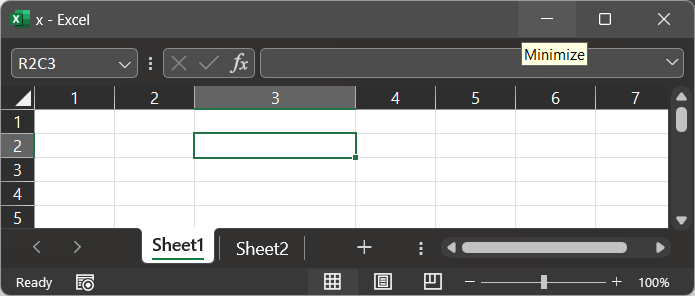Worksheet
An Excel worksheet is a space contained within a workbook in which data is stored and manipulated. No two worksheets residing in the same workbook can share the same name. Worksheets consist of an orthogonal grid in which one cell exists at the intersection of every row and column. Each row and column is labelled and those labels are combined to form cell coordinates.
Each cell’s coordinate is different from that of every other cell. By default, each row of cells on a worksheet is labelled with a number and each column with a letter, with the topmost row labelled “1” and the leftmost column “A”. If the R1C1 reference style is used then both rows and columns are labelled with numbers, with the topmost row labelled “1” and the leftmost column “1”.
A cell’s coordinate is formed by combining: (1) the name of the workbook file, (2) the name of the worksheet on which the cell resides, and (3) the labels attached to the row and the column containing the cell. If the R1C1 reference style is used then cell coordinates are formed by prefixing row labels with “R” and column labels with “C”. Including the name of a workbook in a cell’s coordinate is necessary only if a cell in a different workbook is being referenced, and similarly, the name of a worksheet is necessary only if a cell in a different worksheet is being referenced.
For example, consider a cell in a workbook called x.xlsx at the intersection of the second row and third column of a worksheet called Sheet1. By default, this cell’s coordinate will be [x.xlsx]Sheet1!C2, which can be reduced to Sheet1!C2 if it is referenced from a worksheet in x.xlsx other than Sheet1, and can be reduced further to C2 if the cell is referenced from within Sheet1. If the R1C1 reference style is used, the cell’s coordinate will be [x.xlsx]Sheet1!R2C3. The image to the left demonstrates how cell coordinates are formed by default, and the one on the right demonstrates how they are formed in the R1C1 reference style.

